-
Posts
2.332 -
Joined
-
Last visited
-
Days Won
60
Posts posted by Sundiata
-
-
By the way, on the argument that Kushites were sourcing exotic animals from regions much deeper into Africa, as far as the then more expansive equatorial rainforests and it's mixed forested periphery, I've recently seen a very interesting claim.
On the reliefs of the Persian Apadena, in the scene of the "Aethiopian" tribute bearers, there is a gift of an animal that looks suspiciously much like an Okapi, which nowadays strictly inhabit the equatorial rainforests of northern DR Congo.
There are finds of palm oil residue, a product of humid subsaharan Africa, in Ancient Egyptian tombs, so we know there were trade routes linking very far off regions in Africa with the Nile Valley, but could these imports in Meroitic times have also included exotic animals including okapi's and perhaps even forest elephants from South Sudan? Maybe...
Anyway, here's an interesting 17h century depiction of elephant mounted warriors near the capital of the Kingdom of Kongo, M'banza-Kongo. Probably/possibly a fantasy, but still interesting
Especially in light of the later colonial and post colonial elephant domestication program up-river on/near the Congo river.

-
 2
2
-
-
On 22/11/2021 at 5:45 AM, The Nehusi said:
Just curious if anyone here knows what the medium of exchange would have been in Nubia/Kush? I get the gist of international trade but as far as domestically, how did Nubians/Kushites trade amongst each other preferably in kerma/Napata/Meroe prior to Christianity? I know there's evidence of Egyptian coins being in circulation in lower Nubia but no evidence of home minted coins. With gold being in abundance, you would think that would be the medium of exchange but I've yet to find evidence to prove this theory. Does anyone have any clue? I just find that bartering might have been inconvenient , especially with how advanced Nubians/Kushites were.
They used something called "Deben", which is a weight unit used for anything from gold, silver and copper, to grains. Basically, specific weights of gold, silver, copper, grains and probably a bunch of other stuff had specific values. So they didn't need coin. And in a time when people had more time, barter isn't so bad anyway. It "democratizes" trade. Also, Kush just wasn't a monetary society but a theocratic one where loyal subjects would be "paid" in housing, rations and luxury goods, and tributes were levied on items like cattle, grain, gold and ivory.
In the Stele of Nastasen, an in-game Hero, we actually find mention of their use of the Deben as a measure for gold, even long after the 25th Dynasty.
Excerpt from the "Stela of Nastasen from Year 8. Second half of the 4th cent. BC. Berlin Agyptisches Museum 2268. Urk. III.2, 137-152"
"I had many levies go against the rebel country of Mayokue.
It resisted me, the rebel country, at the Sycomore-of-Sarsare
I caused fighting with it.
I caused a great slaughter.
I had its chief, Tamakheyta, seized.
I caused to be plundered all their women, all the domestic animals,
gold: 2000 deben-weight, long-horned oxen: 35,330 (head), livestock: 55,526
all that by which people are sustained."
Anyway, random addition to the post:
Some really nice Nubian music from Egyptian Nubians in Aswan, just north of the border with Lower Nubia. This would have also been the northern border of the Kushite state for much of 0AD's timeframe. A place where the lines between Kushite, Lower Nubian and Egyptian become so blurred it's difficult to tell them apart.
-
 3
3
-
-
You know, funnily enough, I was experimenting with more appropriate, dedicated textures for Kushite reliefs, including their colors, over a year ago, but never came close to finishing it. I almost forgot...
Maybe one day I'll complete it.
.
On 1/7/2021 at 3:28 PM, wowgetoffyourcellphone said: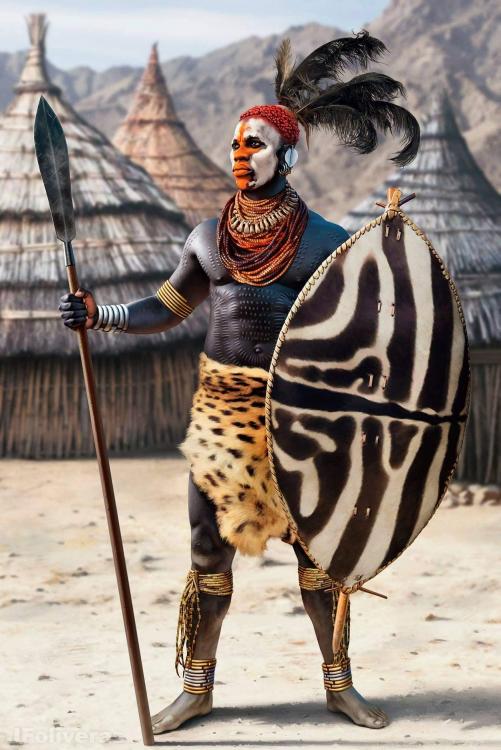
By the way, the artist, Joan Francesc Oliveras Pallerols, changed the title of that work from "Kushite Warrior" to "Tribal Levy of Kush", based on my input
 Either way, it's a pretty amazing piece, like all of his art...
Either way, it's a pretty amazing piece, like all of his art...
-
 5
5
-
-
1 hour ago, PyrrhicVictoryGuy said:
@Sundiata So going with the modern interpretation that this was a later seleucid enterprise, its safe to say that this temple is a prime example of the monarchs utilizing familiar iconography and architecture to the area in order to mitigate the culture clash.
Absolutely, it's one of the defining features of the Greco-Bactrian Kingdom, the Indo-Greek Kingdom and to a degree even the Seleucid Empire and the Ptolemaic Dynasty. They weren't just purely Hellenistic impositions, but fusions of cultures and religions. In the Greco-Bactrian and Indo-Greek Kingdom, this could get pretty wild, as you indicated with those Greek Buddhist missionaries for example... Zoroastrianism was also important and there were fire-temples in the Greco-Bactrian Kingdom.
-
58 minutes ago, PyrrhicVictoryGuy said:
@Sundiata I saw a few pictures of that temple and its a very odd one, might it have been a rehabilitated "native" temple?
Since the city was founded around 280 BC, well after Alexander had come and gone it's definitely not repurposed. Ai Khanoum was full of this stuff. The palace for example followed a very Persian outline, but it featured colonnades capped with Corinthian capitals, and the entablature followed the Doric order, with triglyphs. The other structures included a vaulted, peripteral mausoleum and other more Persian looking stuff. One purely Greek structure I'm aware of was the theatre, carved into a rock face.
"Ai-Khanoum (Aï Khānum, also Ay Khanum, lit. “Lady Moon” in Uzbek), possibly the historical Alexandria on the Oxus (Greek: Ἀλεξάνδρεια ἡ ἐπὶ τοῦ Ώξου), possibly later named Eucratidia, Εὐκρατίδεια) was one of the primary cities of the Greco-Bactrian Kingdomfrom circa 280 BCE, and of the Indo-Greek kings when they ruled both in Bactria and northwestern India, from the time of Demetrius I (200-190 BCE) to the time of Eucratides (170–145 BCE). Previous scholars have argued that Ai Khanoum was founded in the late 4th century BC, following the conquests of Alexander the Great. Recent analysis now strongly suggests that the city was founded c. 280 BC by the Seleucid emperor Antiochus I Soter. The city is located in Takhar Province, northern Afghanistan, at the confluence of the Panj River and the Kokcha River, both tributaries of the Amu Darya, historically known as the Oxus. It is on the lower of two major sets of routes (lowland and highland) which connect Western Asia to the Khyber Pass which gives road access to South Asia.
Ai-Khanoum was one of the focal points of Hellenism in the East for nearly two centuries until its annihilation by nomadic invaders around 145 BCE about the time of the death of Eucratides I."
https://en.wikipedia.org/wiki/Ai-Khanoum
Some visual references for Ai Khanoum:
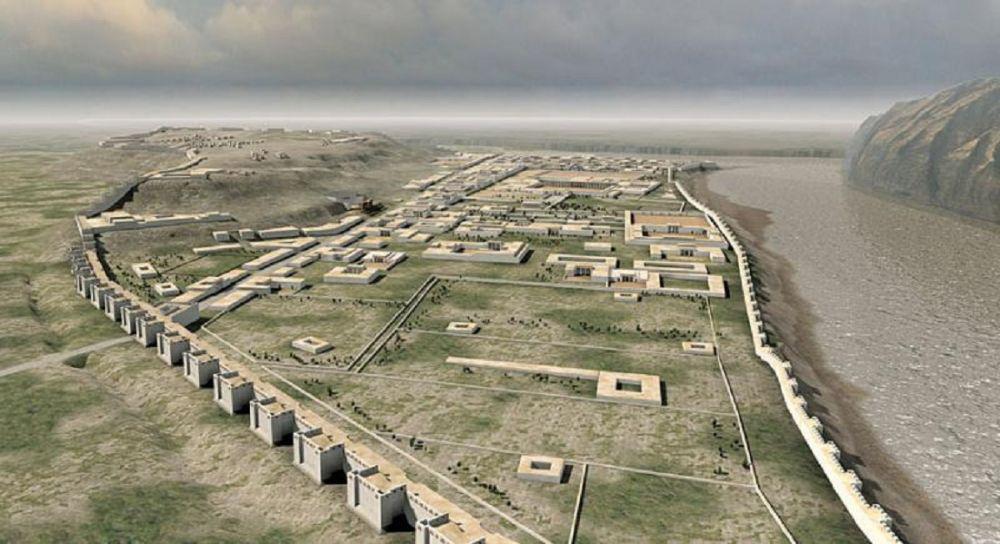
Temple with Indented Niches in the foreground:
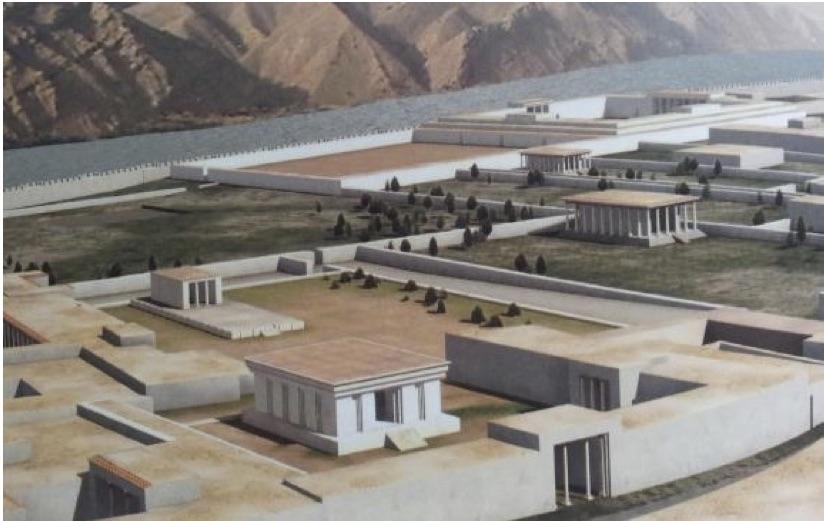
Another reconstruction of the Temple with Indented Niches:
And a reconstruction of the Temple with Indented Niches by Juan de Lara:
https://juan-de-lara.artstation.com/projects/L0eEk
The theatre:
-
 4
4
-
-
I actually made an attempt at a historical reconstruction of a Greco-Bactrian temple in Blender. It's not really finished and I wanted to render a higher quality video, but my laptop will explode if I try. Anyway, you're free to use it as concept art.
I just uploaded what I have to Youtube.
The Temple With Indented Niches, in Ai Khanoum, Afghanistan, 3rd-2nd century B.C..
Some artistic liberties were taken with those triglyphs and metopes for example. Not entirely without justification, but still a little unlikely, I admit. The interior is also mostly educated guesswork.
Some renders:
For those of you curious about trying out Blender, here's a quick illustration of my progress:
SpoilerMy second attempt at Blender (I couldn't even figure out how to select things during my first attempt...):
(Still not sure what it is...)
Third attempt, after figuring out that I really need to watch some tutorials. (Blender Guru is a god!):
Fourth attempt, using the Carthaginian texture pack from 0AD:
Finally, some of the progress I made on the final scene, from importing a low quality 3D scan of a broken Zeus statue and barely understanding how to render images, to a fully and painstakingly remodeled transformation into Zeus-Mithra:
With well over a million tris it goes without saying that this not suited for the game. But it could serve as inspiration for the Greco-Bactrian temple.
I'd love to see this faction become part of the game...
-
 3
3
-
 4
4
-
-
-
Just now, Mentuhotep said:
Herman Junker guides JOSEPH GOEBBLES around the Giza necropolis. (Look at images under)
Hermann Junker (November 29, 1877 in Bendorf – January 9, 1962 in Vienna) was a German archaeologist
best known for his discovery of the Merimde-Benisalam site in the West Nile Delta in Lower Egypt in 1928.
Paul Joseph Goebbels 29 October 1897 – 1 May 1945) was a German Nazi politician and Reich Minister of Propaganda of Nazi Germany from 1933 to 1945. He was one of Adolf Hitler's closest and most devoted associates, and was known for his skills in public speaking and his deeply virulent antisemitism, which was evident in his publicly voiced views. He advocated progressively harsher discrimination, including the extermination of the Jews in the Holocaust.
Oswald Menghin (19 April 1888 – 29 November 1973) was an Austrian Prehistorian and University professor. He established an international reputation before the War, while he was professor at the University of Vienna. His work on race and culture was serviceable to the German nationalist movement of the 1930s. At the time of the Anschluss he served as Minister of Education in the cabinet formed by Arthur Seyß-Inquart. He avoided indictment as a war criminal and resumed his career in Argentina after the war.
4th pic. 2nd from left...George Andrew Reisner Jr. (November 5, 1867 – June 6, 1942) was an American archaeologist of Ancient Egypt, Nubia and Palestine.
In a 1918 bulletin for the museum of Fine Arts Boston, he wrote, “The native negroid race had never developed either its trade or any industry worthy of mention, and owed their cultural position to the Egyptian immigrants and to the imported Egyptian civilization.”.........he also said that the 25th dynasty was not black but a Egypto-Libyan ruling class.
Pic 4 man on far right Ludwig Borchardt (October 5, 1863 – August 12, 1938) was a German Egyptologist who was born in Berlin. He is best known for finding a famous bust of Nefertiti at Amarna.4th pic man in white pants... James Henry Breasted (/ˈbrɛstɪd/; August 27, 1865 – December 2, 1935) was an American archaeologist, Egyptologist, and historian. After completing his PhD at the University of Berlin in 1894, he joined the faculty of the University of Chicago. In 1901 he became director of the Haskell Oriental Museum at the university, where he continued to concentrate on Egypt. In 1905 Breasted was promoted to full professor, and held the first chair in Egyptology and Oriental History in the United States.
Yes, a lot of the early Egyptologists were explicitly racist and I addressed this head on, even in my very first post in this thread. The whitewashing done by previous generations of academics does not give us carte blanche to blackwash all of them in the current generation. Two wrongs don't make a right.
Just now, Mentuhotep said:I can also fully guarantee 99.999% of people have not seen the other statue of Heminunu (Posted image below with the broken nose)
Just now, Mentuhotep said:That statue on the left isn't Hemiunu. That's Akhmeretnesut, "superintendent of the Royal gardens". He's from a different dynasty and the statue was found in different tomb.
https://collections.mfa.org/objects/140412
So should we be suspicious of your posts?
Just now, Mentuhotep said:And I shouldn’t be suspicious of the Heminunu statue?!
You obscured the original head prior to restoration with text. Let people judge for themselves if the statue was accurately restored or not:
Just now, Mentuhotep said:The “reserve heads” over 30 heads were found mostly in Gizza reign of Khufu 4th dynasty. They are difficult to interpret or understand but
called “reserve heads” because a German archaeologist POSTULATED that there purpose was to replace the heads of the deceased but some think they were molds or models for the sculptors. Almost all show signs of deliberate mutilation except one, which led scholars to theorized that they served a magical function during the burial ceremonies but were ritualistically killed to prevent harm to the deceased. This practice was in used for a short period of time.So I'll say one more time I shouldn’t be suspicious of the Heminunu statue?!
None of those other reserve heads depict Hemiunu and were not found in his tomb, so they have no relevance to the Hemiunu statue or its head, which isn't even a reserve head but the original head, found broken off besides the statue.
Just now, Mentuhotep said:In this case, G4000 refers to a cemetery, not a single tomb. "G4000" is also used interchangeably with Hemiunu's mastaba, which can understandably cause confusion, but none of reserve heads come from Hemiunu's mastaba, but from other tombs in this fairly large cemetary. The location of all the reserve heads found are depicted in this plan, indicated with small circles. The large mastaba (4000) on top, belongs to Hemiunu, and as you can see, none of the reserve heads come from that mastaba.
Just now, Mentuhotep said:That's because that fragment was actually found in Hemiunu's mastaba...
The 8th picture in this link: http://giza.fas.harvard.edu/sites/999/full/
-
 1
1
-
-
@Mentuhotep, you're barely adding anything of value to this thread, and are in fact derailing it. This thread is about the Kingdom of Kush, not about "black Egypt" or whatever. In fact, your posts are irrelevant to almost anything pertaining to this game. This isn't a political forum, and this isn't a forum to have racial arguments. The internet is already full of those, and we try to keep things as civil as possible here.
The one argument on which I'll admit you sort of have a point is about the color depicted on Kushite temples. Color is very poorly preserved on Kushite monuments, especially the more southern ones, but from the few surviving examples, varying tones of red (especially darker red) were indeed most commonly used, following Egyptian standards. If you'd just stuck to that argument, no problem, it's a *potentially* valid criticism. But on the other hand, none of the major temples depicted in-game have surviving color on their exterior facades and it's worth noting the famous Kushite granite statues were often deliberately blackened. Yellows are often used for Egyptian gods and goddesses. Kushite women are never depicted yellow.
That said, please refrain from further spamming this, or any other thread with your unnecessarily racialized posts. Race is not the focus of our development team. Thank you.
On 20/7/2021 at 7:32 AM, Genava55 said:Ancient Egyptian mummy genomes suggest an increase of Sub-Saharan African ancestry in post-Roman periods
@Genava55, not to lend too much credence to our new fellow, but I see this study referenced rather carelessly all over the place.
From the very same study you linked:
"However, we note that all our genetic data were obtained from a single site in Middle Egypt and may not be representative for all of ancient Egypt. It is possible that populations in the south of Egypt were more closely related to those of Nubia and had a higher sub-Saharan genetic component, in which case the argument for an influx of sub-Saharan ancestries after the Roman Period might only be partially valid and have to be nuanced."
The study involved genetic material from only 3 mummies from the New Kingdom, out of 90 mummies. The other 87 were from later periods, post-New Kingdom. None of those 3 older mummies had full genome sequences because the DNA was too degraded. And all the mumies came from a single location 100 km south of the Delta, and was compared to modern DNA from the Delta. This tells us very little about Ancient Egypt as a whole, especially not Upper Egypt or Egypt prior to the New Kingdom collapse. To make it worse, the "Sub-Saharan" samples used for comparison came primarily from the West African Yoruba and Mandinka and Central African Pygmies, instead of Sudanese, or other North East African black populations, which is ridiculous of course... The scientists of that study even acknowledge it themselves when they wrote: "Clearly, more genetic studies on ancient human remains from southern Egypt and Sudan are needed before apodictic statements can be made."
Also, "Absolute estimates of African ancestry using these two methods in the three ancient individuals range from 6 to 15%", which isn't even that negligible for people so far up north into Egypt, more than 600 km north of the border of Lower Nubia and almost 850 km north of the border with Upper Nubia, from a bird's eye view. That would be c. 730km and and over 1000km respectively, when following the Nile. I honestly wouldn't have suspected any common ancestry using the proxies they used... Also worth noting that there were deportation events of Kushites (and I presume those perceived to be Kushites), from Egypt, most famously under the Assyrians who bragged about not leaving even one Kushite in the land (definitely hyperbole, but still relevant).
Perhaps this illustration will emphasize the pointlessness of a "black vs white Egypt"-debate, which isn't only completely anachronistic, as those modern categories meant next to nothing to ancient Nile populations, but also because Ancient Egyptian identity wasn't a racial identity in the first place but a cultural, religious, linguistic and political one. Egypt has always been a crossroads between North Africa and the broader Mediterranean, the Levant and the Middle East in general, and Nubia and Subsaharan Africa. These guys are both Ancient Egyptians, it's that simple:
-
 1
1
-
 1
1
-
-
On 10/7/2021 at 10:35 AM, meshal said:
hello , i need the source of the second image ?
"A New Glance at the Portrait of the «Elephant-Bearer» in Meroe", by Alexey K. Vinogradov:
-
-
By the way, here is another rather unique variation of those Azande shields. This one is from DRC Congo, but they stretch into southern South Sudan as well:
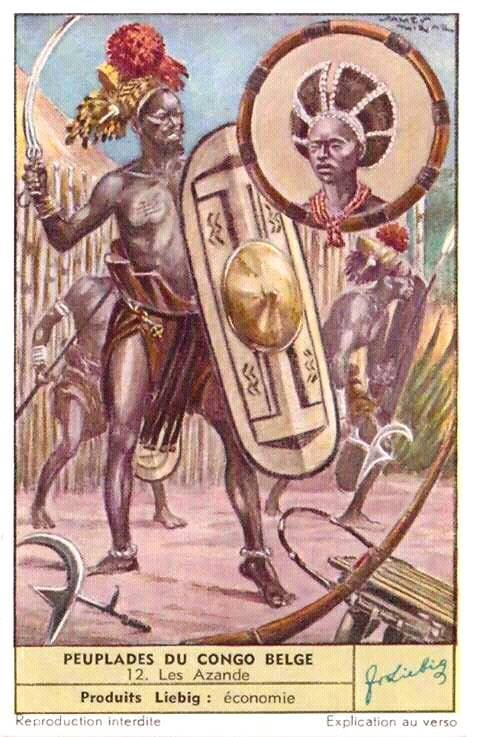
Nice Azande shield wall:
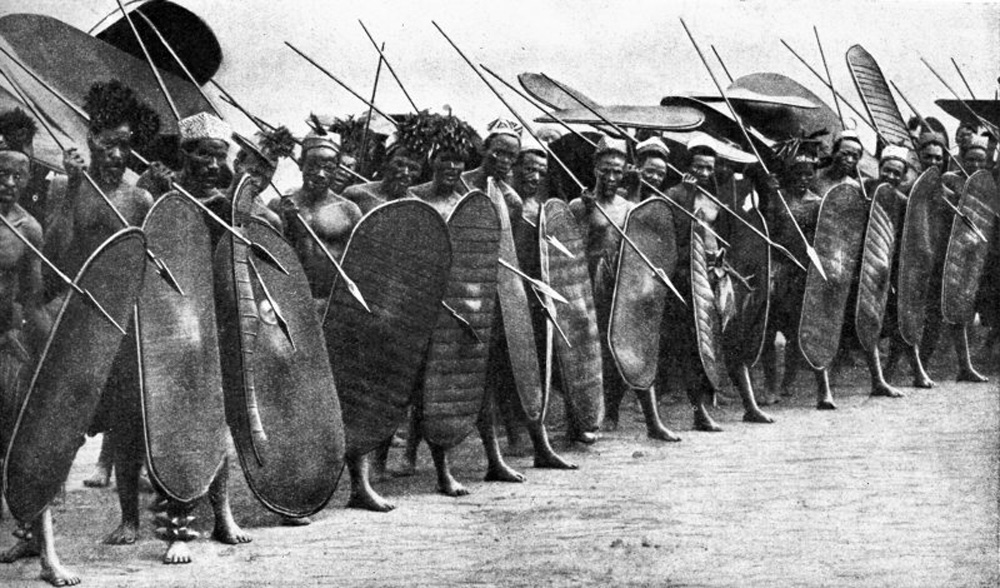
The Azande are an 18th century fusion of the Vungara, with a ruling class of conquers known as the Bandia Dynasty or the Ngabandi people. From Britannica:
"The Ngbandi came from what is now South Sudan, converging upon and assimilating a number of small groups in their present lands. Ngbandi of the Bandia clan conquered Zande areas in the 18th century, creating a series of states; they assimilated Zande culture and language and are now indistinguishable from that group."
-
 2
2
-
 1
1
-
-
Amazing work guys!
@wowgetoffyourcellphone, wow!
-
 1
1
-
 1
1
-
-
On 6/6/2021 at 4:50 AM, wowgetoffyourcellphone said:
This would be awesome for the Kushites/Noba^ Maybe use the octagon shields for one of the Noba units (Maceman?), and these for the other (javelineer?).
Go for it!
By the way, those type of shields were used as far south as Uganda. There was a Kingdom called Buganda, referred to as Waganda in the older literature (not making this up), who used similar shields (slightly larger):
Nubian merc 2000 years earlier with a similarly shaped shield:
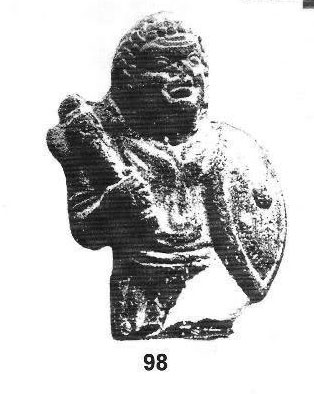 On 6/6/2021 at 4:50 AM, wowgetoffyourcellphone said:
On 6/6/2021 at 4:50 AM, wowgetoffyourcellphone said:Those look really great man!
The shields remind me a little of another Ptolemaic figurine of a southern mercenary (or police or something), clearly mounted. Almost exactly the same as another such figure I've shared here before:
-
 2
2
-
-
Idea for an Illyrian swordsman, by Joan Francesc Oliveras Pallerols:
He writes:
"Illyrian auxiliary warrior at the service of Alexander the Great. The Illyrians were an ancient people that inhabited the north-west of the Balkan Peninsula, along the Adriatic Sea. They were regarded as bloodthirsty and warlike people, influenced by foreign peoples like the Greeks or the Celts. Illyria was also seen as a land of pirates. A contingent of Illyrians accompanied Alexander the Great in his conquest of Persia, after he defeated an Illyrian revolt when he succeeded his father."
https://www.artstation.com/artwork/nQ0P2o
-
 4
4
-
-
-
Just now, wowgetoffyourcellphone said:
My thing is, wouldn't "competitive" players have all the stats memorized or at least intuited? That's what's always bothered me.
Sure, but it goes a lot further than just stats. For me it's just about accommodating peoples personal tastes as much as possible. More optionality helps with mass appeal, without compromising the actual game. We're still playing the same game, different people just have different ways of reading it.
-
 1
1
-
-
On a personal level, I prefer a light, non-intrusive, intuitive UI, perhaps even modular, easily adjustable, or with tabs, to save space, with lots of tooltips, but especially visual in-game info through animations and damage decals and things like that. Definitely not that mastodon of an AoE III UI. (Nescio probably has different preferences, so opinions differ even among casuals). But I understand competitive desires for as much useful information as possible, with little regard for visuals or sense of immersion. I agree that catering to a variety of preferences where possible is ideal. People like choice/options on how to do things. I think the popularity of @ffffffff's fgod-mod with competitive players speaks for itself. Also hotkey functionality should probably expanded to include all possible use cases, as I saw some complaints about that.
-
How many people actually still play Alpha 23? Serious question.
Controversial opinion, but I'm inclined to think that these strong reactions from certain types of players mean that we're actually moving in the right direction. There's definitely still a lot of room for improvement, but that has always been the case for 0AD. Either way, there are always going to be these kind of reactionary responses... I've seen them with almost every Alpha. Alpha 23 was just around for so long that some people got overly comfortable with a broken meta. Even dependent on it.
Also, about the archers, the fact that they need to be paired with melee units (meat-shields) to become truly effective is a good thing, right?? Once a sufficient number of melee units reach them, they cut through them like butter. I even saw someone complain about OP archers while he was just massively outnumbered by them...
And complaining that everyone has rams is like complaining that everyone has spearmen... Some unit types are more generic by nature.
-
 1
1
-
 1
1
-
-
@m7600, indeed, the model is looking fantastic already!
Here's a detailed proposed reconstruction of the facade, that I think looks really great and should be useful to interpret Nescio's suggestion:
26 minutes ago, Nescio said:- the east side (front) had two storeys, each with a colonnade;

-
 1
1
-
 1
1
-
@Alexandermb if you're internet connection and schedule allows it, I think this is a job for you

(we miss you
 )
)
-
 3
3
-
-
14 minutes ago, Genava55 said:
Sadly, historical sources clearly suggest the prodromoi were from the lowest-class of citizens, the Thetes are also described as a work force in the fields/farms. This is an example but it clearly demonstrates it is not that much simple.
As I said, shepherds can function as scouts as well. And if there are clear references to farm hands being used as scouts in certain civs, I don't have a problem with that either. I'm just brainstorming here, not trying to oversimplify things. I'm just looking at how we could to integrate current gameplay (1st cav unit is usually used for hunting and/or scouting) with this new proposed scout unit, and how to flesh it out and make the units recognizable.
-
 1
1
-
-
1 hour ago, Thorfinn the Shallow Minded said:
I could see the hunting dog choice work particularly well for the Britons.
Hunting dogs were important to hunters in most cultures. To illustrate, the reference examples provided so far here were Roman, Greek, Kushite, and mainland Celtic. I'm sure Britons used hunting dogs as well, but why only them?
1 hour ago, Freagarach said:Perhaps we can give hunters a pelt over the back of their horse or something?
I was also thinking that the units themselves could wear something like bearskins or something hanging from their shoulders, depending on the civ?
52 minutes ago, Genava55 said:Have you heard of shepherds?
I have
 53 minutes ago, Genava55 said:
53 minutes ago, Genava55 said:They are more numerous and as much able to scout as hunters. They must endure the weather and have the habit to defend their animals.
Sure, shepherds, could work as scouts as well. Never denied that. Though, they usually stay around their flocks and tend to avoid overly difficult terrain (animals breaking legs is a costly thing). Hunters just seem less restricted.
56 minutes ago, Genava55 said:Furthermore, there is a huge difference in getting your own food in the wild and providing food for your community.
Yes, I know. I specifically remarked that hunting wasn't a major source of sustenance for the average Joe in most societies.
57 minutes ago, Genava55 said:Finally, you fell in a false dichotomy with your urban example. Even an urban society like the Roman mainly employed men from the countryside for the military service.
That was my point. Who better to use as scouts than people who are already accustomed to it. Your average farm boy probably won't cut it either. While those that were accustomed to hunting would be far more adept at the task.
-
1 hour ago, Genava55 said:
I don't see why scouting should be related to hunting. It seems to be two contradictory activities.
I can't imagine a better scout than a hunter... Hunters need to scout all the time. It's their speciality. Scouts need to able to live off the land more effectively as well, as they can spend many days away from any supply line. Perhaps not a job you'd entrust to an urban recruit.
1 hour ago, borg- said:Well, it also doesn't have much to do with cavalry being able to hunt, since cavalry was generally the most noble part of soldiers (I think).
Aside from specialized hunters (often on foot), mounted nobility actually did quite a bit of hunting (usually accompanied by footmen, and dogs of course). More than the regular Joe. Hunting was usually a privilege, not a major source of sustenance for the regular people, in most societies at least. The act of hunting was often a status symbol in itself.
I guess pairing the unit with hunting dogs for authenticity and recognizability wasn't a popular suggestion?
21 hours ago, wowgetoffyourcellphone said:I gave them simple daggers.
I've always thought that daggers for any kind of mounted unit looked like an awkward choice. Spears, javelins and even bow and arrows in specific cases seem a lot more appropriate. I'd defer to my dog-suggestion for recognizability.
-
 2
2
-
 1
1
-

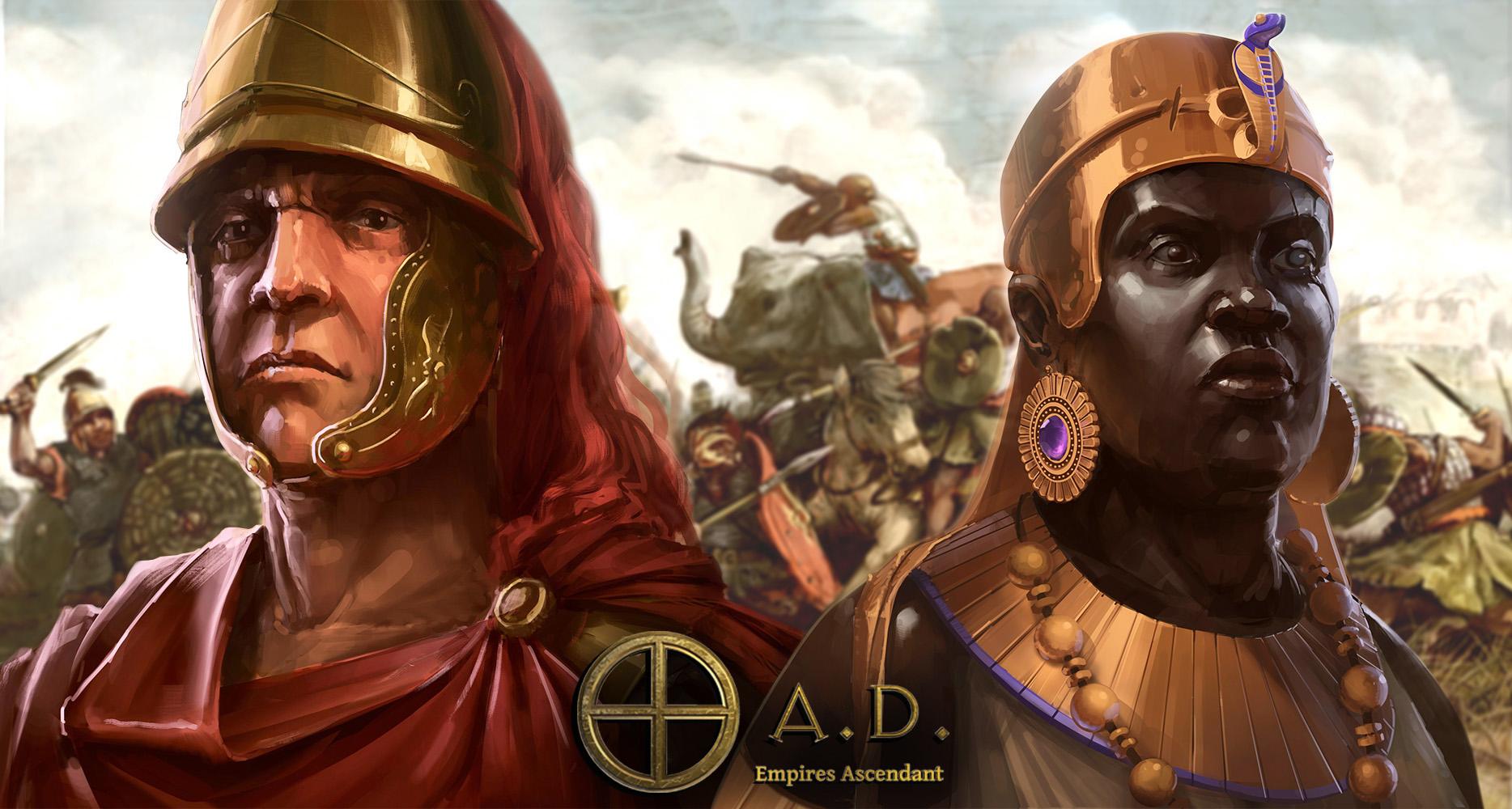

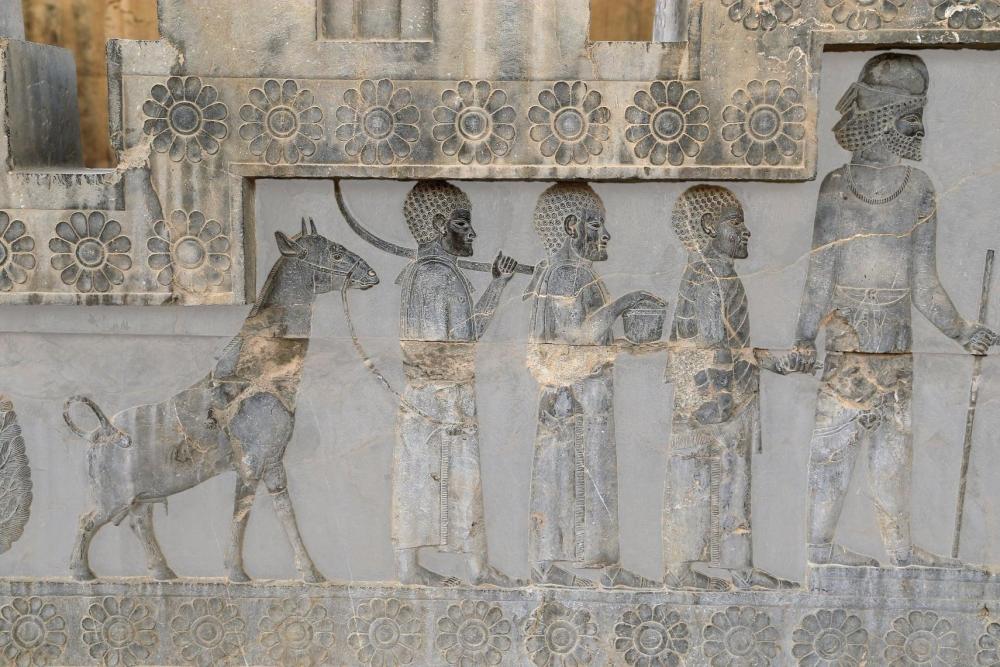
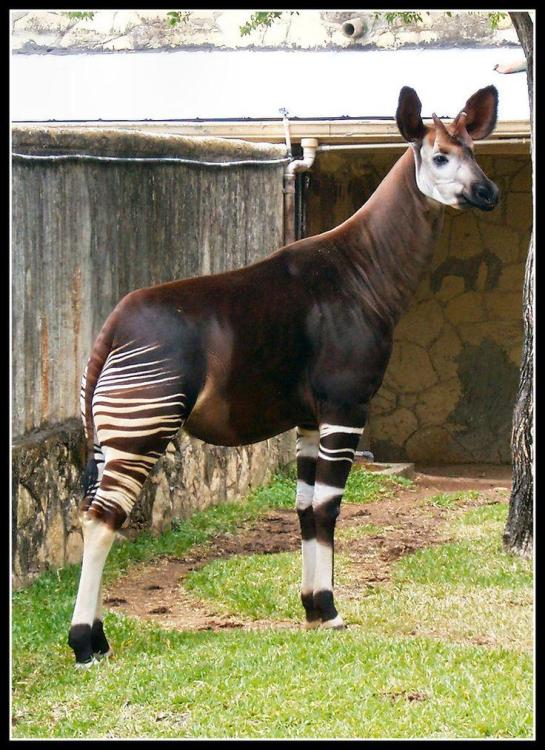
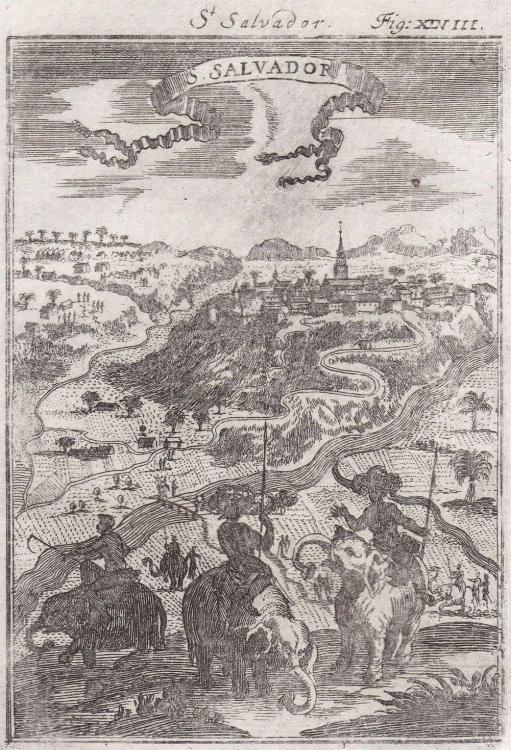
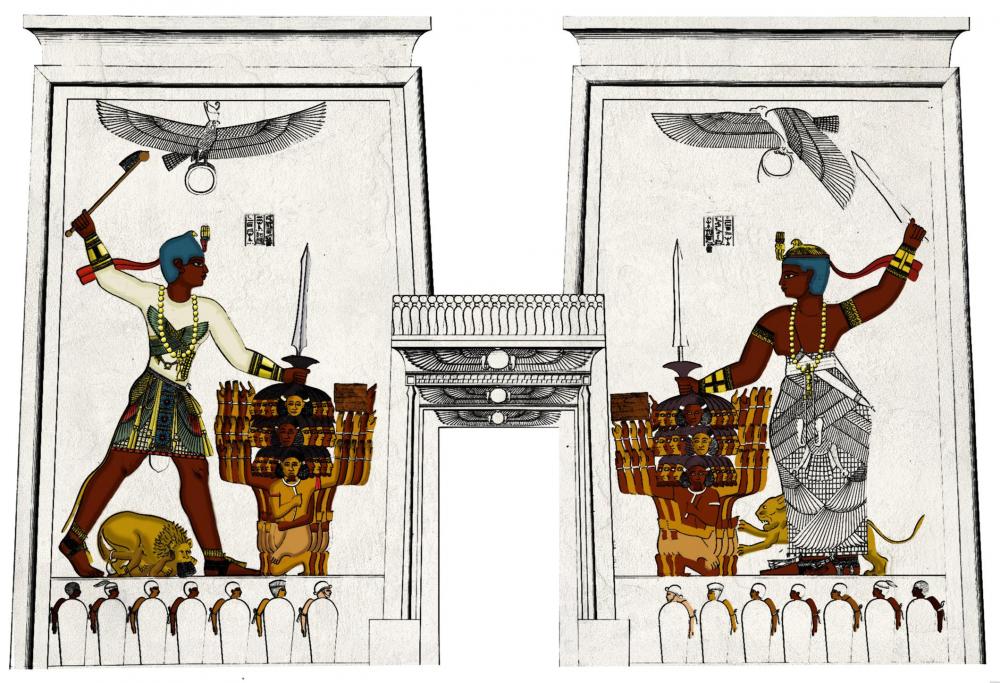
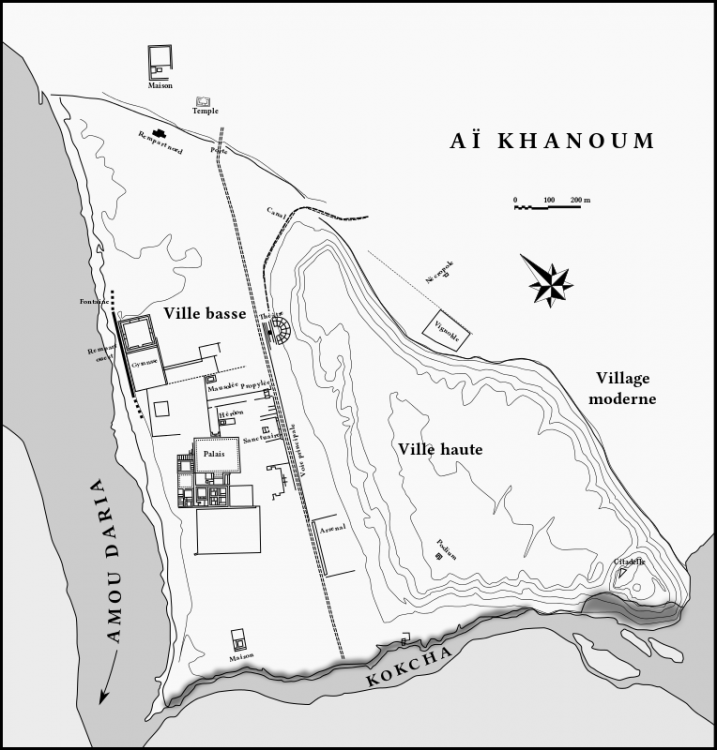
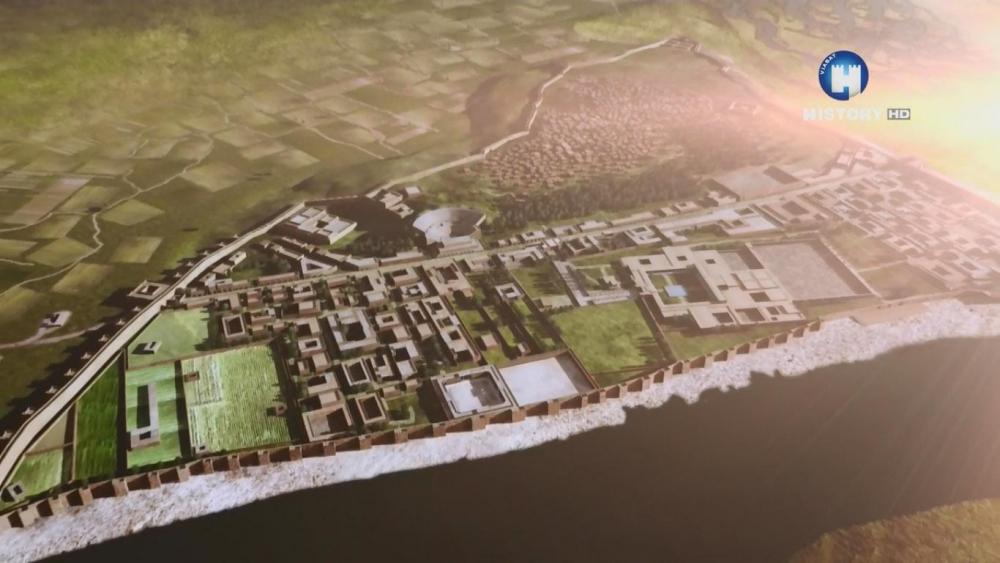
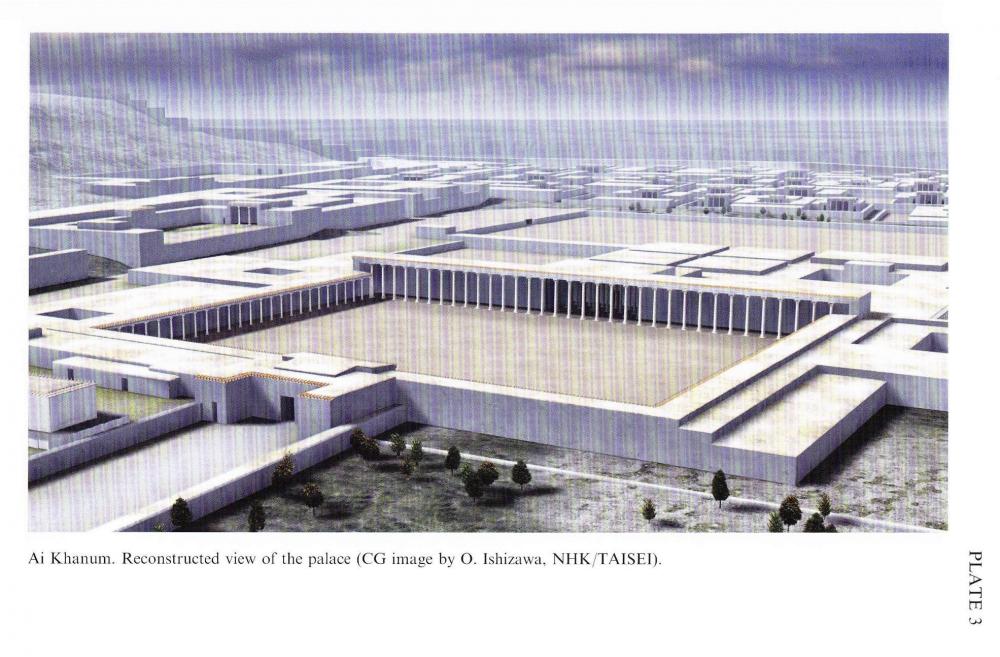
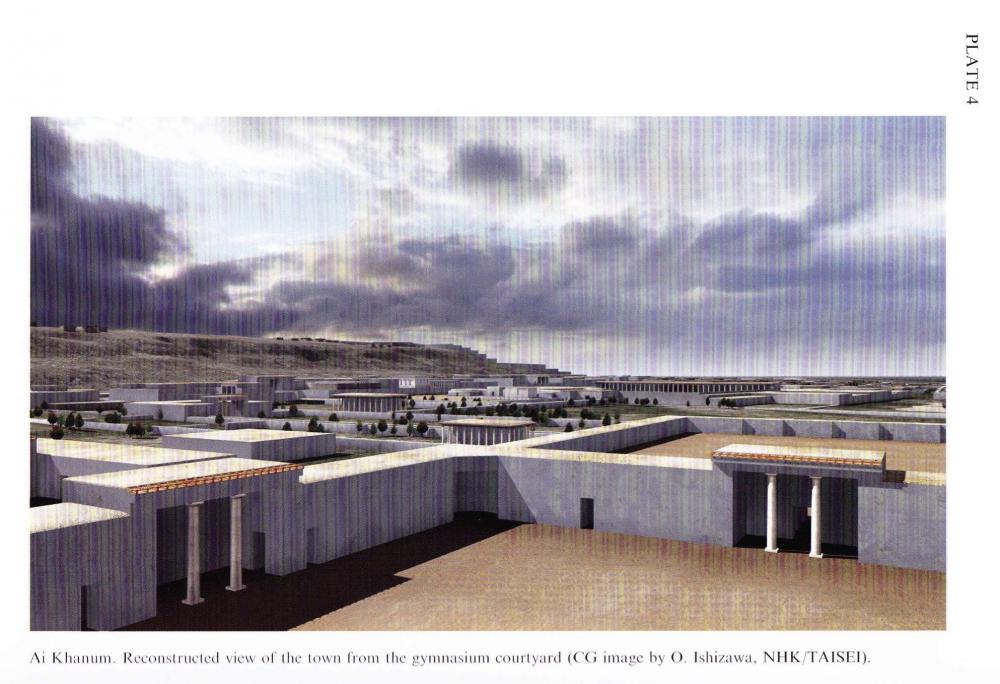
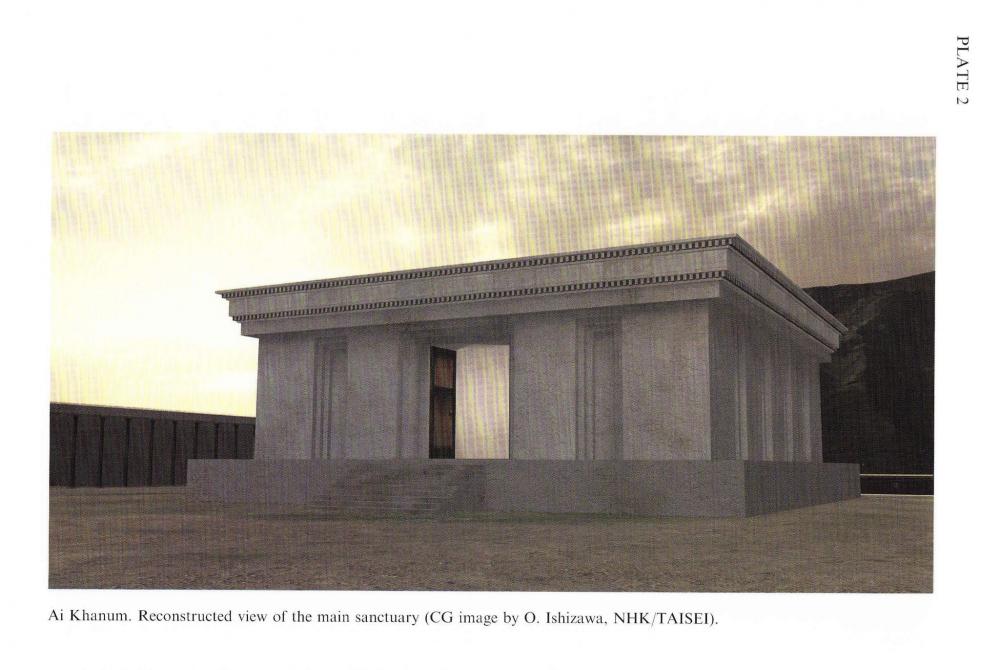
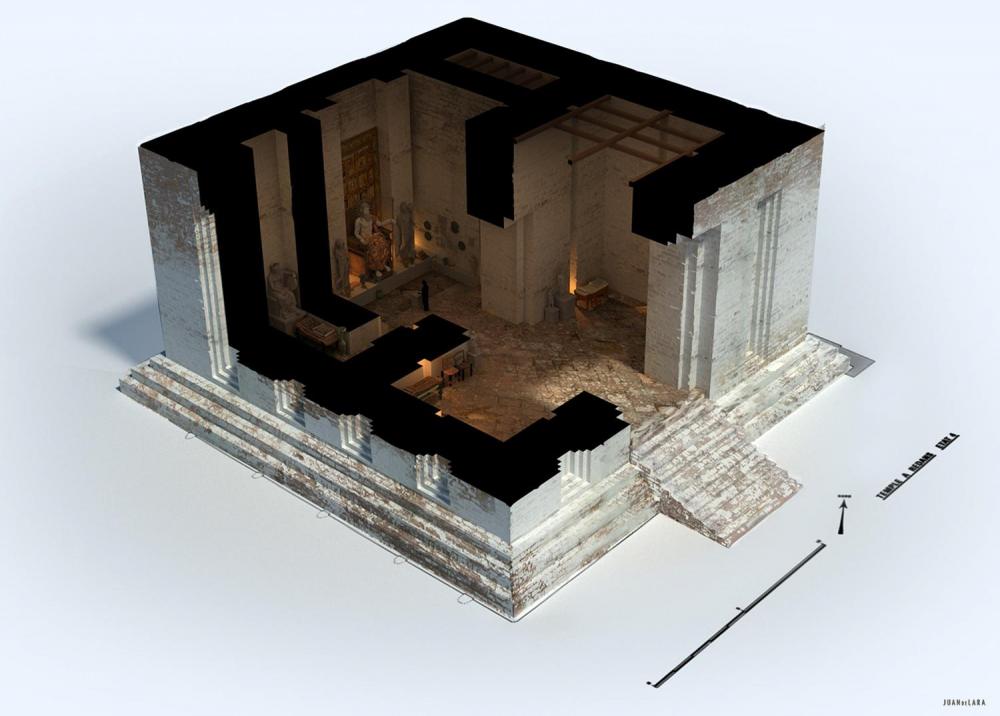
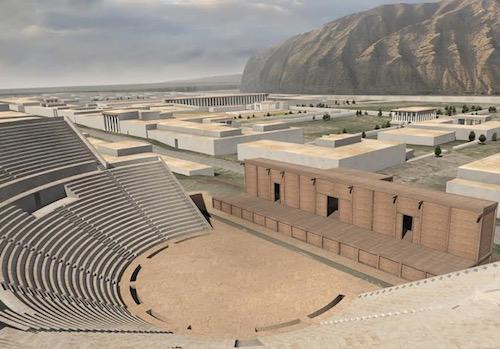
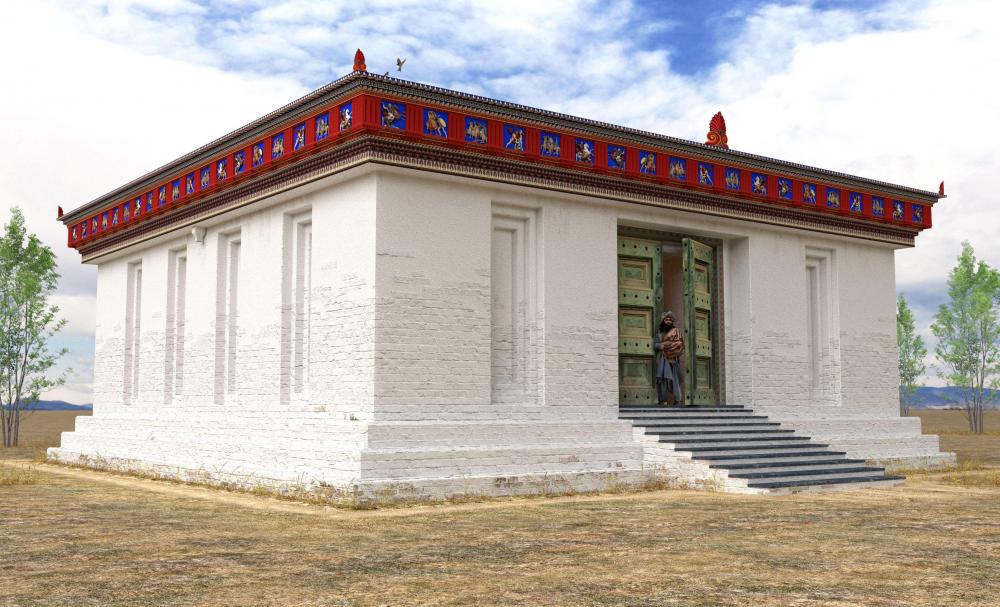
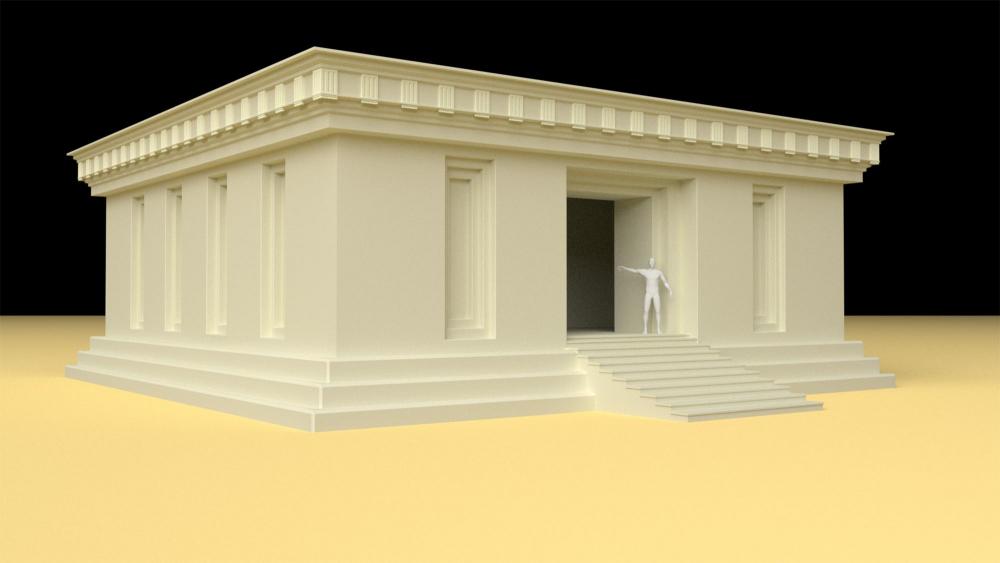
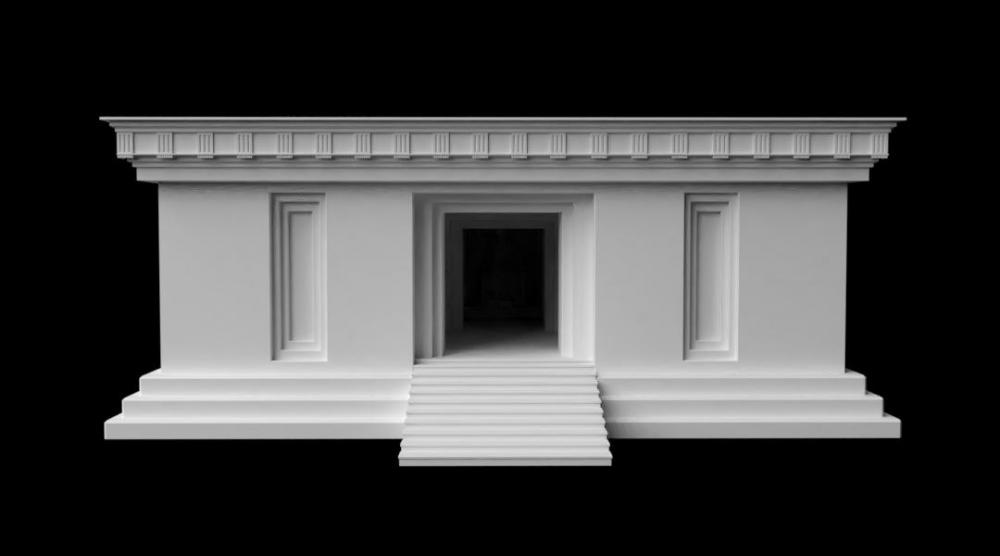
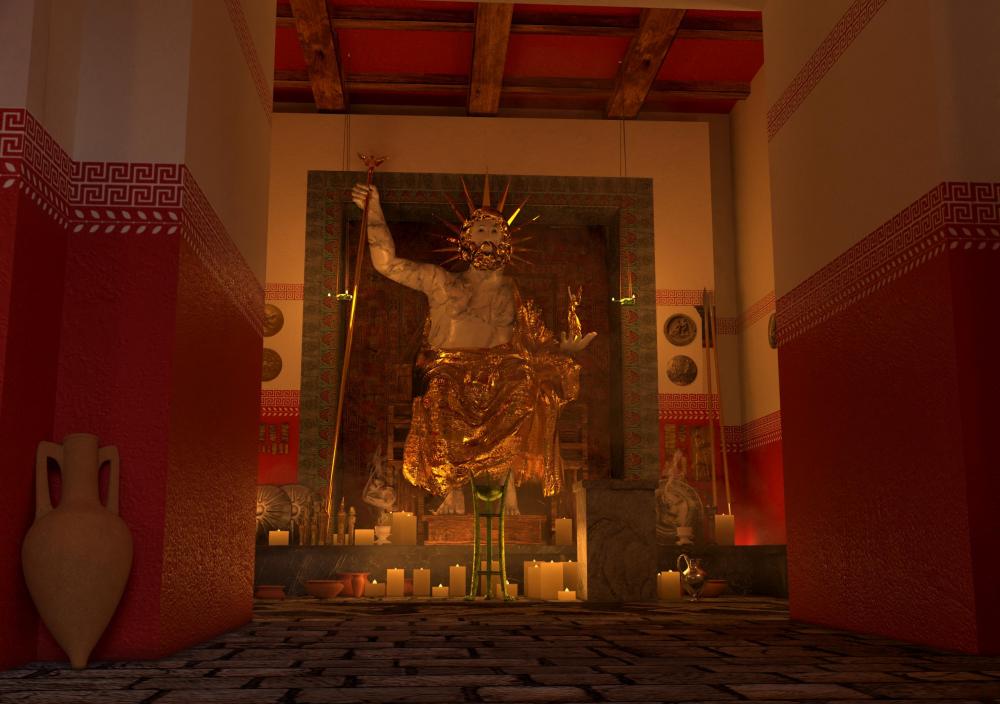
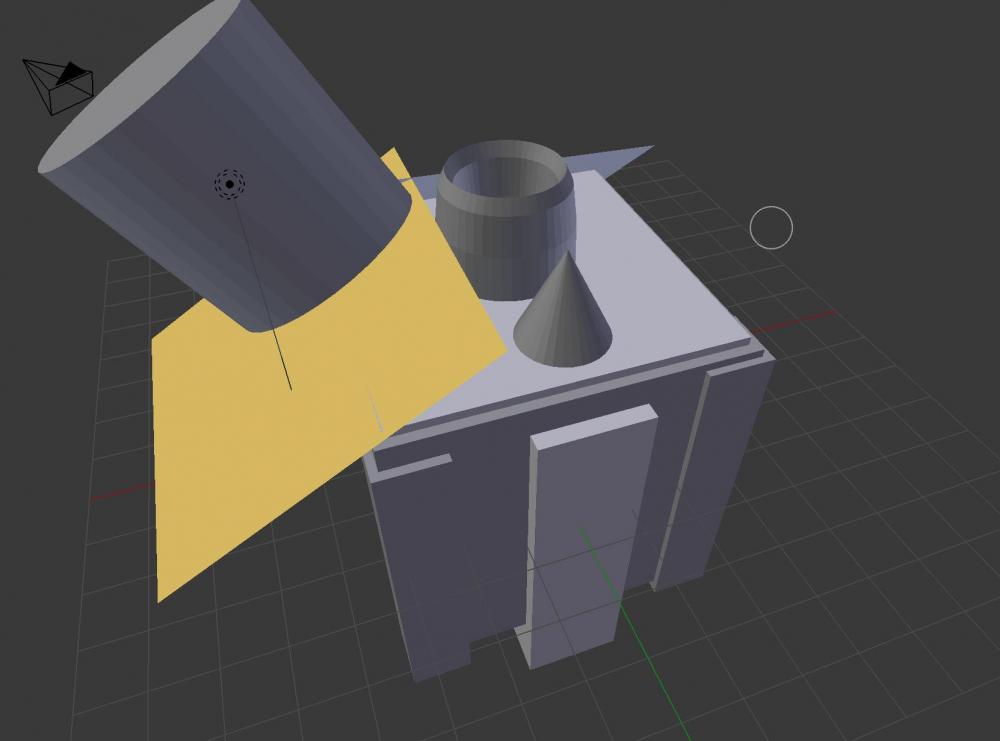
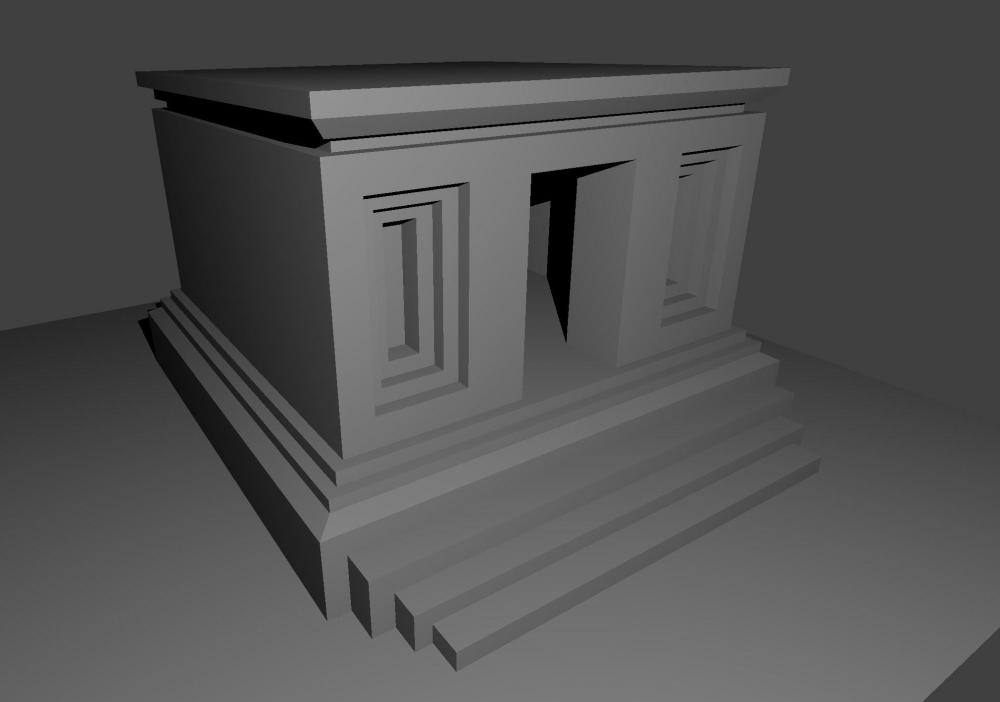
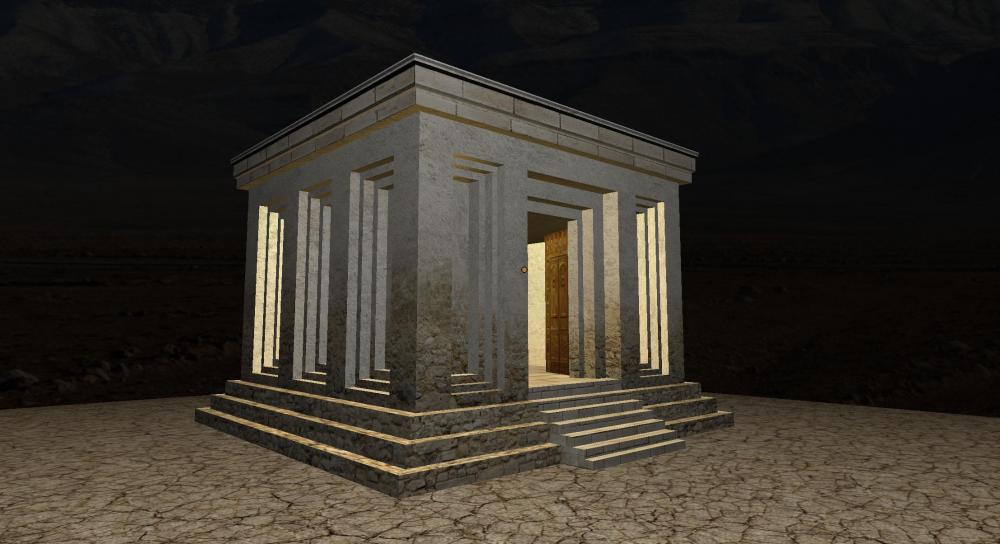
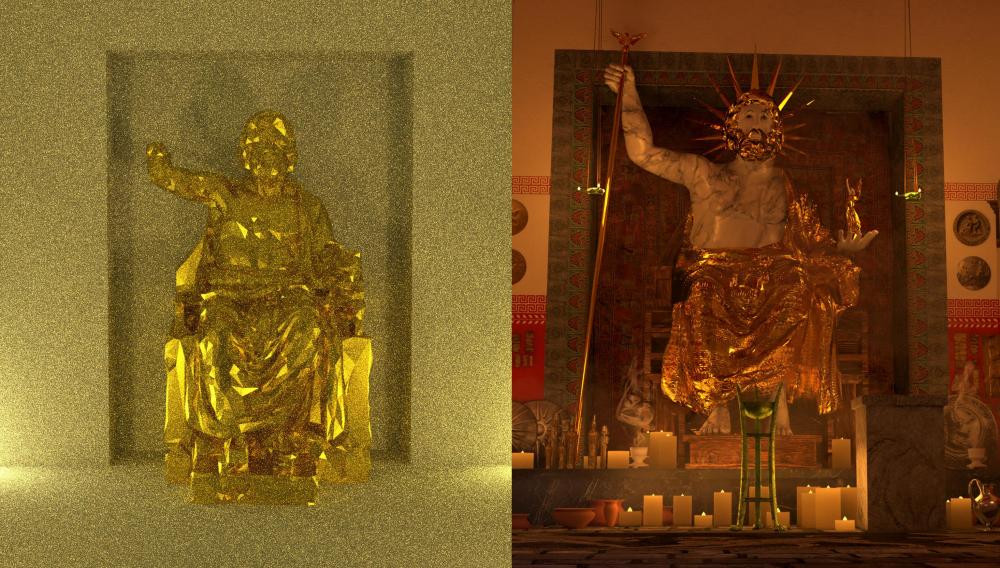





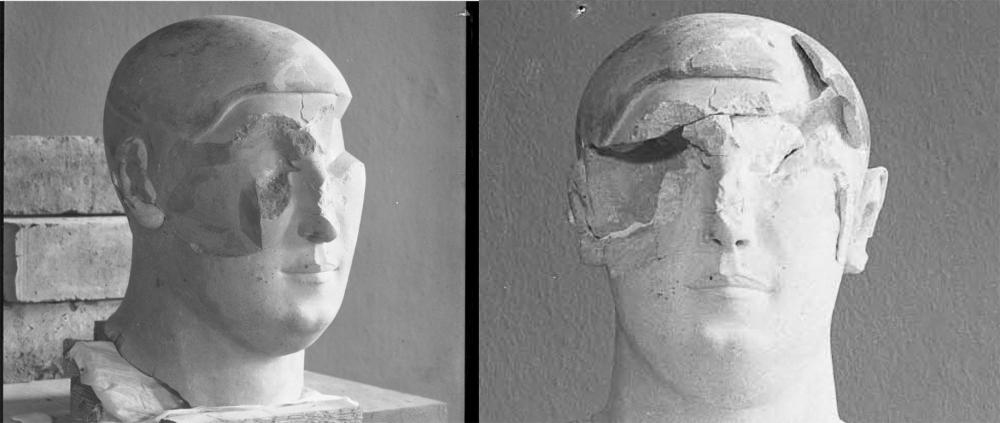

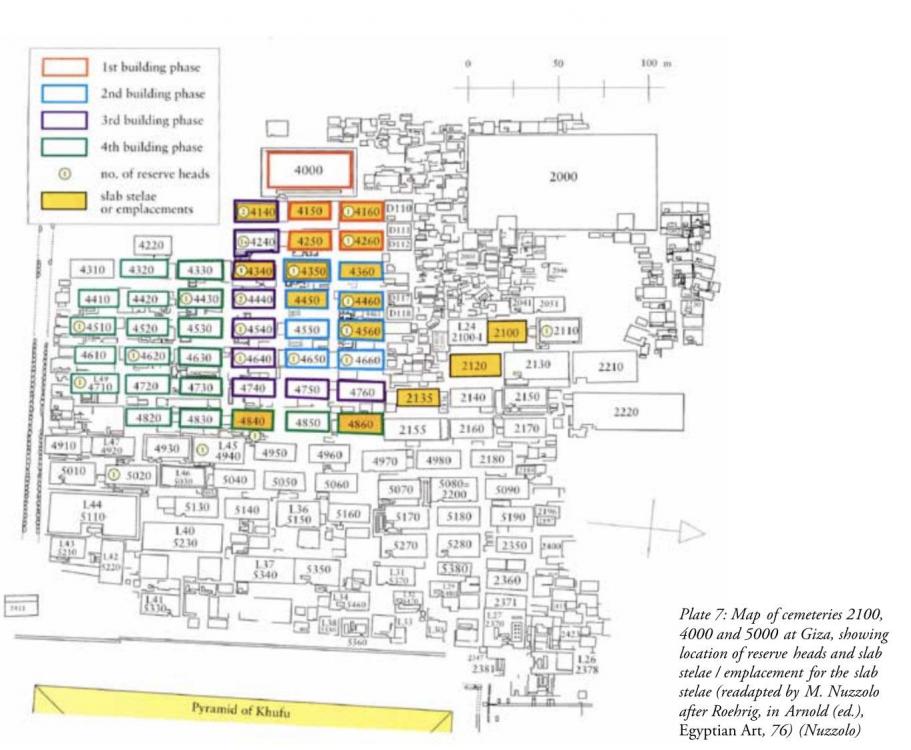

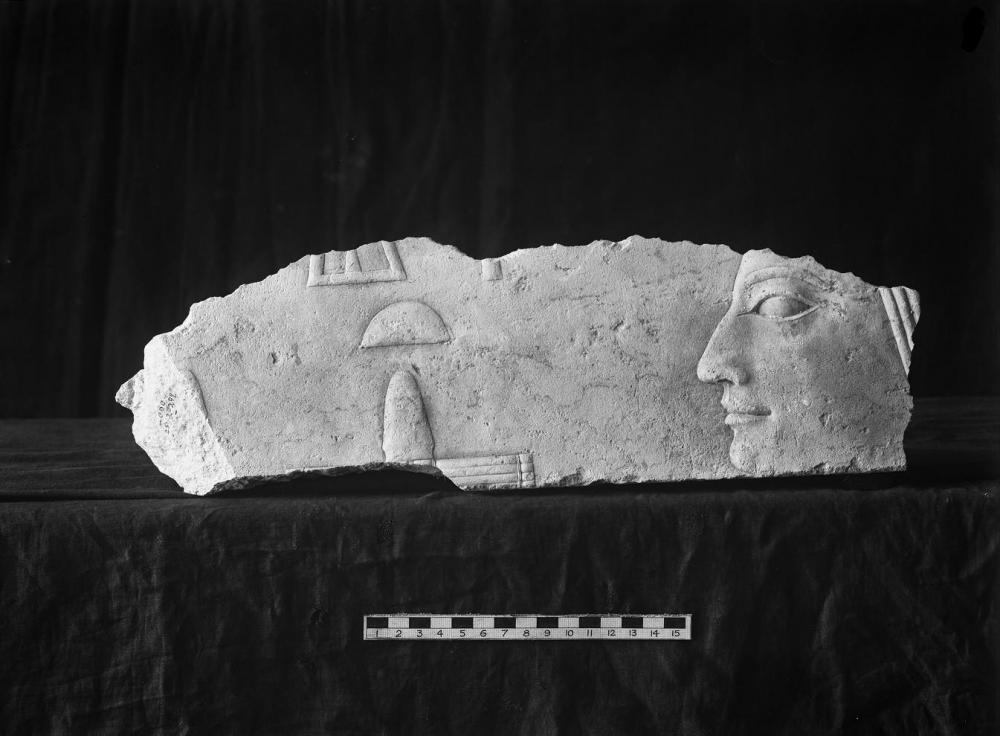
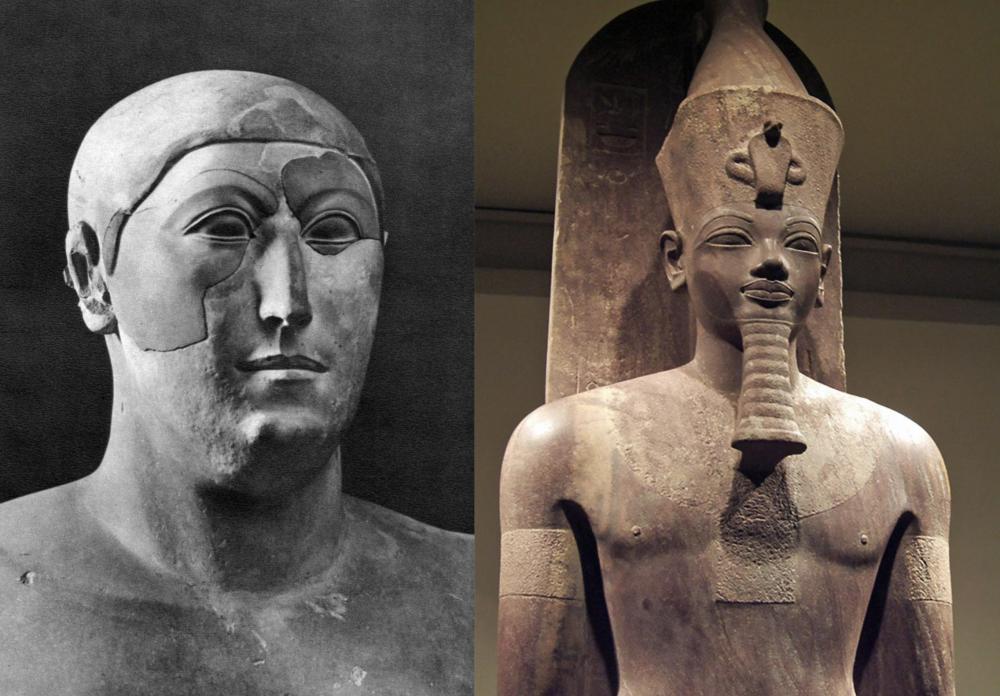

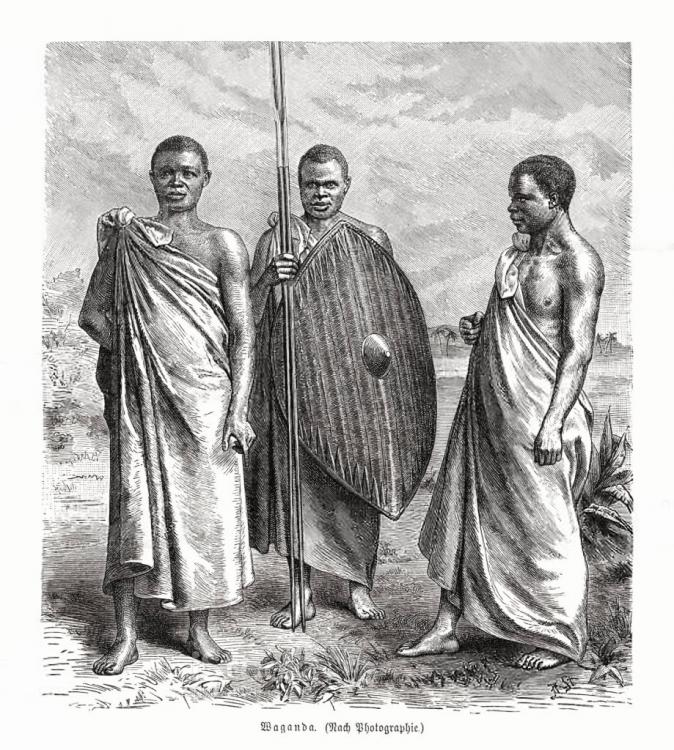

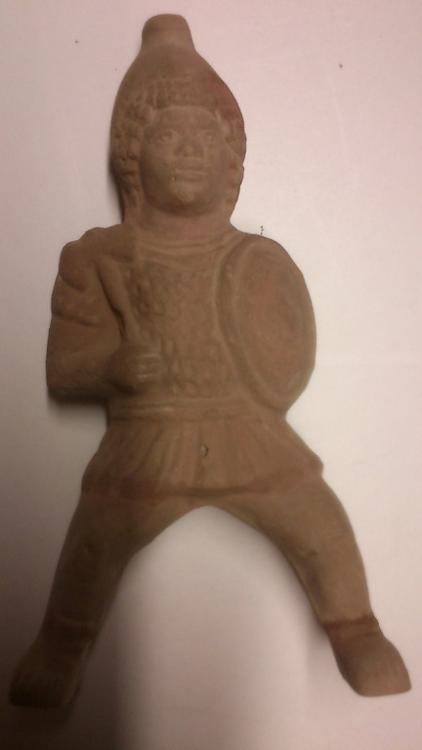
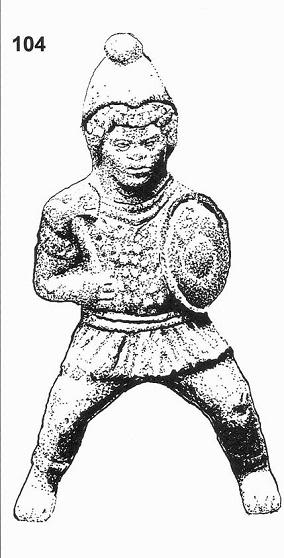
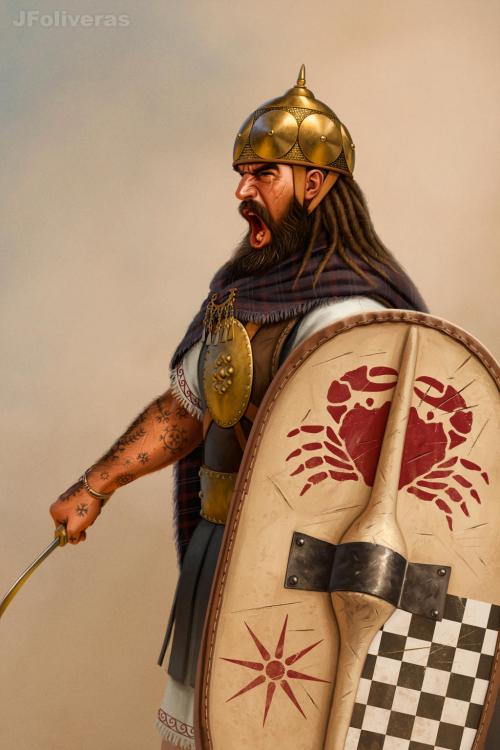
The Kingdom of Kush: A proper introduction [Illustrated]
in Official tasks
Posted
Quick color adjustment to make the gold look more gold: